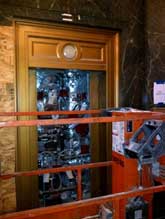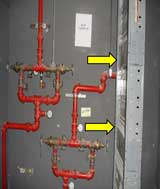
Since the Frank Brannigan era, the fire service has been talking about preplanning, yet it is often the path least traveled by fire suppression units. These firefighters confront the enemy every day with little or no critical knowledge about the buildings in their response districts.
Often in the fire service, the word “preplanning” is associated with the Bureau of Fire Prevention and Code Enforcement. As firefighters, one of things that takes us outside our comfort zone is responding to a fire and/or an all-hazard (non-fire) emergency in a structure that we are not familiar with. Fire suppression units may find themselves not too familiar with some buildings within a company’s response district, less familiar with buildings outside their response district, and even less acquainted with other adjoining municipalities for mutual-aid calls.
The Art of Building Intelligence: Preparing High-Rise Operational Battle Plans
Breaking Down Building Intelligence
21st Century Tactical Building Intelligence Model
Leveraging Building Intelligence for an Initial Response and Beyond
If These Walls Could Talk: eBuilding Intelligence
However, a fire company can diminish this unfamiliarity by adopting a “Know Before You Go” (KbyG) mentality to deal with building uncertainties. To better understand these uncertainties, a fire unit should perform a building “recon” to gather its intelligence. This KbyG mentality will support “battle plan” actions from initial operations through mitigation. Performing a fire company building recon can open firefighter’s eyes and thought process as to how a specific building will react in a fire or non-fire emergencies. An exterior recon structure read can reveal FDC connections, exposures to the building, roof setbacks, and much more. An interior read can be the different floor layouts, roof and below grade access stairs, and so forth. Another building intelligence that can be collected are firefighter concerns about any potential safety and precaution threats during an emergency response, such as the presence of a UPS battery room, truss floor construction, 5,000-gallon basement diesel tank in an open area, fire protection system impairments, and the like. All this is hardly an exhaustive list of what your line firefighters might learn by fostering a KbyG outlook when it comes to recon.
Below is an example of a fire recon team (FRT) survey.
What You See on the Outside Is Not What You Get on the Inside
When performing recon on either an existing building, new construction, or a structure undergoing renovations, members of an FRT unit should recognize an inside potential treat. During a major renovation project, while conducting a fire company survey, the FRT unit came across two items of concern. One was an elevator bank that had a car hoistway area converted into a building system vertical void space. This new space was enclosed with fire-rated walls separating it from the remaining two elevator cars. However, for this new space, the original elevator hoistway car sliding doors would remain-in-place and blend in with the other elevator car doors. To access new building system space, a flush mounted cylinder lock was installed to open the doors, but the locking mechanism was hard to detect (1).

(1) Without the FRT discovery, would a firefighter ever think of looking at an elevator hoistway door to trace for a void space serving the building utility systems that ran from the sub-basement to the 34th floor? Photos by author.
The second FRT unit discovery in the same elevator bank area was a standard door that did house some building systems, but after the opening door the hair on the back of your neck would stand-up. Inside this building utility closet was a high-voltage electric bus riser (2) and in close proximity were the wet sprinkler riser control valves.

(2) Without this FRT discovery would, a firefighter know that a potential massive life hazard explosive threat exists within this structure?
These expose, highly energized electric bus bars feed an upper level transformer room that runs out of the sub-basement utility vault room. One would think the latter installation was an easy chase run to install the sprinkler piping with no consequential afterthought of having two incompatible building systems sharing the same vertical void space. Any unsustainable sprinkler water leak onto these exposed copper bus bars could create havoc.
Firefighters need to get building intelligence in a concise and user-friendly manner under emergency conditions, especially when building staff are not present. Establish a KbyG mentality to bring your department out of the dark in creating a legacy building database that will support firefighter needs today and into the future.
Future KbyG features will help firefighters to reduce fireground uncertainty that is building specific and improve a fire company’s ability to reduce risk and meet their fiduciary needs.
Follow us at twitter.com/JackJMurphy1
Jack J. Murphy, M.A., is chairman of the High-Rise Fire/Life Safety Directors Association, New York City. He is a fire marshal (ret.), a former deputy chief, and a former Bergen County (NJ) deputy fire coordinator. He serves on the following National Fire Protection Association committees: High-Rise Building Safety Advisory and 1620 Pre-Incident Planning, and Building Fire/Life Safety Director. He represents the International Association of Fire Chiefs on the Northeast Region Fire Code Work Group. He is the author of numerous fire service articles and authored a field handbook on the Rapid Incident Command System, authored the “Pre-Incident Planning” chapter of Fire Engineering’s Handbook for Firefighter I and II, and co-authored “Bridging the Gap: Fire Safety and Green Buildings.” He is an editorial advisory board member of Fire Engineering and FDIC International. He was the recipient of the 2012 Tom Brennan Lifetime Achievement Award.

